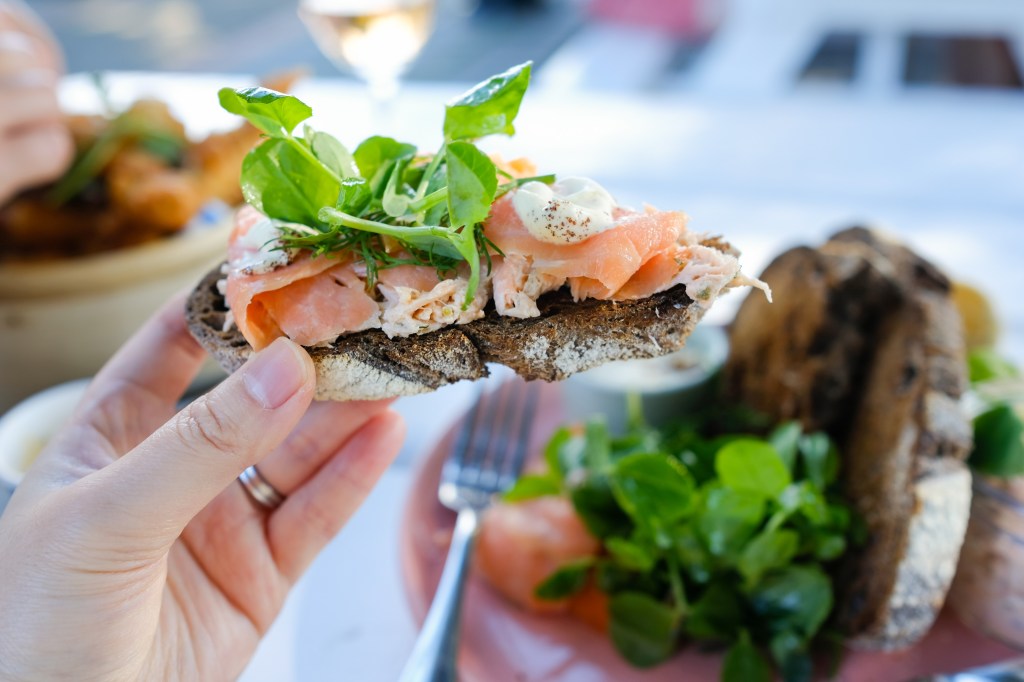Livia Wang, the founder and CEO of wellness company Access Corporate, predicts the five trends that will shape the industry in 2024.
BRANDVOICE – SPECIAL FEATURE

Estimated at more than US$5.6 trillion in 2022, the global wellness industry has experienced significant post-pandemic growth, with consumers looking towards healthier lives.
As the industry continues its upward trend – it’s predicted to reach US$8.5 trillion by 2027 – Livia Wang, founder and CEO of wellness company Access Corporate, predicts five trends will emerge this year.
Trend 1: Personalised diets
Wang believes the wellness industry is set to shift away from one-size-fits-all dietary recommendations to a more precise, personalised model of nutrition that tailors advice, products and services to an individual’s unique biological makeup, lifestyle and health goals.
“Consumers walk into a supermarket and are met with more choices than they can process,” Wang says. “They feel they have been empowered to make a decision, but in fact, they may need someone to help make those decisions.”

According to recent market research, the personalised nutrition sector is projected to reach $64 billion by 2040. Access Corporate Group is heavily invested in this space to unlock the science of personalised nutrition for men, women, and individuals and incorporate it into their daily lives at an affordable price.
“Using personalised nutrition, we can help you specifically achieve the goal you want to achieve,” Wang says. “It solves a big problem for consumers and is commercially viable.”
Trend 2: The water revolution
Recent studies and media coverage have shed light on the presence of microplastics in our drinking water and the deficiency of essential vitamins and minerals due to aggressive filtration methods like reverse osmosis.
A 2024 study found bottled water contains up to 100 times more plastic nanoparticles than previously thought – and it could lead to issues around water quality and supply, Wang says.
“If there is one decision we need to empower consumers to make, it’s what water to drink,” she says.

“You probably drink about 10 swimming pools of water in your life, but we don’t think about the quality. Why? Well, it’s dangerous to start thinking about it. Then, you might consider why water is in a plastic bottle or the minerals in your water.
Wang’s vision is for a more sustainable and health-based water supply. She says that on a recent international trip, she met with several scientists who are reverse engineering the natural mineral profile of water from natural sources to remineralise water following filtration. They then restructure and re-oxygenate water through movement to restore its health profile. There is a goal to bring this to everyday consumers in 2025.
Trend 3: Biohacking your longevity
As more consumers embrace technology to optimise their health span and the field of longevity science advances, Wang believes biohacking longevity will take the industry by storm this year.
Wang finds the emergence of DNA Age testing, which measures your biological age and your chronological age, particularly exciting, as it can help provide a comprehensive assessment of your aging process and help identify areas for targeted intervention.

“You have two ages, and you can change one,” she says.
Access Corporate Group is already in the field via its brand, SRW. Its products are designed to target the biological pathways of aging, like cellular energy production, DNA repair and inflammation via personalised longevity programs. These track biomarkers of aging over six months or more and aim to demonstrate measurable improvements in biological age and overall health.
Trend 4: Gut health
This year, Wang expects the gut microbiome to emerge as a key player in improving both physical and mental well-being.
“Your gut is so much more than a digestive system. Your wellness is defined by the microbiomes in your gut, from energy levels and mental health to skin health, beauty and sleep quality.”
Livia Wang
For instance, recent studies have shown that the gut microbiome is crucial in regulating mood, stress response, and cognitive function. Individuals with depression had significantly lower levels of certain beneficial gut bacteria compared to healthy controls, according to a 2023 study.
Another study found that microbiome diversity was positively correlated with increased sleep efficiency and total sleep time. Those with greater microbiome diversity also were less likely to wake up during their sleep time.
“No one talks about your microbiome, just what you put in your mouth. But really, it’s the processor – the microbiome – that defines how nutrition is distributed to your body and how you feel,” says Wang.
Related
Access Corporate’s TheroNomic’s brand has developed a gut health solution, combining pre-, pro-, and postbiotics in a single formulation. The tribiotic aims to support the growth and function of beneficial gut bacteria while also promoting the production of postbiotic compounds that can positively influence brain health.
As the science of the microbiome continues to evolve, Wang expects more targeted solutions that leverage the power of the gut to improve both mental and physical health.
Trend 5: New commercial models and utilisation of AI
Wang predicts traditional health advice channels are set to face significant challenges in 2024, leading to the rise of AI-powered, open-sourced networks of experts for reliable health and wellness information.
“People increasingly distrust conventional sources and encounter obstacles in accessing primary care, fuelling a shift towards decentralised networks for guidance,” she says.
But that’s not to say human expertise will become obsolete; Wang says it’s still crucial, particularly in areas like nutrition. Open-sourced networks like WhatsApp groups or podcasts may bridge the gap by connecting individuals with health and wellness experts. As these grass roots communities foster increased collaboration across industries, new business ideas are set to emerge both online and offline, potentially leading to a range of innovative commercial models for delivering wellness products and services to the community.
“As healthcare systems face challenges such as GP shortages and long wait times, brands and their communities fill the void. They utilise open-sourced networks and AI-driven personalisation to empower consumers in managing their health and making informed choices regarding nutrition and supplementation.”



